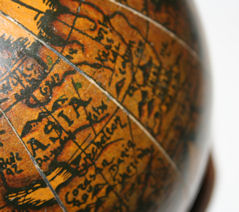 According to the Economist article, “Racial classification: All together now” published in December of 2012, the two big surprises in 2012 were that Asian-Americans outnumbered Latinos in immigrating to the U.S. and that 71% of Asian-Americans voted for President Obama in the last election – roughly equivalent to Latinos.
According to the Economist article, “Racial classification: All together now” published in December of 2012, the two big surprises in 2012 were that Asian-Americans outnumbered Latinos in immigrating to the U.S. and that 71% of Asian-Americans voted for President Obama in the last election – roughly equivalent to Latinos.
Fundraising organizations in the U.S. have become very interested cultivating Asian-Americans. But who are they? The largest subgroup are Chinese-Americans, but they represent just 23% of Asian Americans. As a group, Asian-Americans are wealthier and better educated than other groups including whites. But the differences run deep including different religions and very different languages.
According to the Economist, only 19% of Asian-Americans use the term to describe themselves. Not too surprisingly, many second-generation Asian-Americans (median age of 17 years) are okay with the term and less concerned about their heritage. What is surprising and a bit revealing is that in some cases, Asian-Americans can unite as a much larger group and demand attention and power in civic life.
If you are considering different fundraising strategies that involve pursuing specific ethnic groups like Asian-Americans, this is a reminder that some of the names we assign to ethnic groups are purely inventions that may not resonate with those individuals. When considering donor motivations, passions and priorities, targeting such a diverse group as Asian-Americans is not likely to be effective. You will need to get more specific. Doing the research on your donors’ communities to discover how they interact within them is critical to creating and executing a strategy that focuses on a specific group.
Prospect research is always important, but when you are looking to reach out to new ethnic groups with ties to their home countries, prospect research takes on a different flavor. We need to discover more than what we can learn about a specific individual. We need to learn how the donor prospect fits into the local community and how cultural differences affect philanthropy.